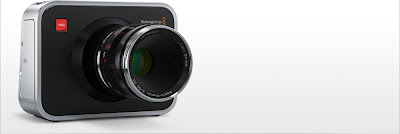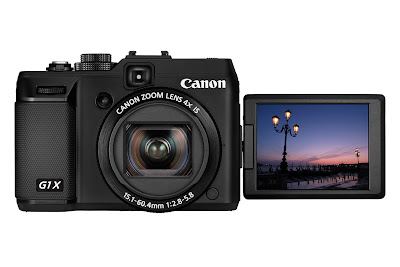 Key Features
Key Features
Nikon FX-format CMOS sensor with 36.3 effective Megapixels
Native ISO 100 to ISO 6,400
Manipulate light to your advantage
Shoot broadcast quality video
Comprehensive high-fidelity audio recording control
Live view output on external monitors
Integrated image sensor cleaning system
EXPEED 3 image-processing engine
Advanced Scene Recognition System
Time-lapse photography
Advanced Multi-CAM 3500FX autofocus sensor module
Versatile AF-area modes
High-precision, high-durability shutter
High dynamic range (HDR)
Don’t miss a moment
3.2 inch, 921k-dot LCD monitor
Lightweight yet durable construction
High-speed CF and SD dual card slots
Nikon FX-format CMOS sensor with 36.3 effective MegapixelsWith a huge 36.3 Megapixel full-frame CMOS sensor your photos will have more detail than ever before. The sensor is 35.9 X 24 mm – producing such incredible detail, that the Nikon D800 can render textures and nuances equivalent to high-end medium format cameras. Define every eyelash, every line in tree bark, and every shimmer of light. You can now savour the exceptional depth in your photos and enlarge them as big as A1 posters at 200dpi. Native ISO 100 to ISO 6,400 – expandable to the equivalent of ISO 50 to 25,600High-resolution, studio-quality images shouldn’t be restricted to the studio. The Nikon D800 sets a new benchmark for high-resolution DSLR cameras, with clean and crisp images across a wide ISO range.
Flexibility like this opens up new imaging opportunities for still photographers and cinematographers. Even at high ISO settings, the camera’s intelligent noise reduction systems manage noise without sacrificing fine details, giving the nikon D800 the edge on its competition.
The difference can even be seen in low-contrast subjects such as hair and grass textures, which are often essential elements of cinema as well as high-resolution portraits and landscape images. High image quality at higher ISOs also means that you can shoot still images handheld more confidently, knowing that fast shutter speeds will reduce blur.
Manipulate light to your advantageWith the Nikon D800, our engineers have combined high-resolution performance with a wide ISO range – making many photographers dreams a reality. New methods have been employed to manipulate light transmission to the sensor’s photo diodes, delivering crisp, brilliant images with significantly less noise.
Shoot broadcast quality videoMany filmmakers require the highly mobile, lightweight and compact advantages of a DSLR in order to cover large events, make documentaries, music videos or movies. For these professionals, the Nikon D800 is ready to create incredible cinematic experiences.
The Nikon D800 is capable of shooting full 1080p HD video in either FX or DX modes – yours to choose depending on your creative intentions. Combined with the processing power of the new EXPEED 3 processor, you can shoot broadcast quality video at 30 frames per second.
Comprehensive high-fidelity audio recording controlThe Nikon D800 is designed for crisp stereo recording with a built-in external stereo microphone input. Attach the compact ME-1 Stereo Microphone to record clear sound while significantly reducing mechanical noise. An external headphone jack enables you to effectively monitor and control audio in isolation.
Live view output on external monitorsWhile shooting movies you can now simultaneously check the video feed on an external monitor using an HDMI connection, in addition to the camera’s TFT monitor. For those who need the purest video output for professional quality editing, you can now record uncompressed movie live view footage directly to an external storage device via HDMI interface.
Integrated image sensor cleaning systemEver experienced the frustrations of dust reaching your cameras image sensor? The Nikon D800 automatically prevents this. Employing Nikon’s new Integrated Dust Reduction System the sensor self-cleans itself with four resonance frequencies to vibrate the optical low-pass filter and shake dust away. There’s also no need to worry if you’re shooting landscapes at low shutter speeds – you can set the self-cleaning sensor onto manual to prevent any camera shake.
EXPEED 3 image-processing engine: speed, versatility, and high performanceTo process the Nikon D800’s huge 36.3 megapixel full-frame CMOS, Nikon engineers have included the new EXPEED 3 image processing engine so you don’t have to sacrifice speed for the privilege of incredibly high-resolution photos. From image processing and card recording to image playback and image transfer, EXPEED 3 manages massive amounts of data at faster speeds than the acclaimed EXPEED 2 processor. Even with specialised processing features like Active D-Lighting and highISO noise reduction, capture speed is not affected. EXPEED 3 is so powerful that it handles data-intensive tasks such as Full HD video recording at 30fps with ease.
Advanced Scene Recognition System with 91K-pixel RGB sensorNikon’s revolutionary Advanced Scene Recognition System, introduced with the flagship Nikon D4 s and brightness with unprecedented precision then use that information to implement various automatic controls and give you more natural-looking results.
The real breakthrough, however, is that the sensor can detect human faces with startling accuracy when shooting through the optical viewfinder. Along with face detection, detailed scene analysis is utilised to support more accurate auto-focus; auto exposure and i-TTL flash exposure results in a diverse range of compositional and lighting situations. The improved subject tracking is most noticeable when using 3D-tracking, which can maintain a focus on moving subjects smaller in size than with previous generations.
Time-lapse photographyCapture a variety of scenes and subjects at a breathtaking pace. The Nikon D800 lets you set intervals and frame rates in order to dramatically relay slow-moving activity at dramatic speeds. The Nikon D800 allows you to shoot time-lapse photography with replaying rates from 24 times to 36,000 times faster than normal. Time-lapse photography files can be saved as a movie file.
Advanced Multi-CAM 3500FX autofocus sensor moduleAccurate AF detection is crucial for extremely high-resolution still images in every situation. The 51 sensor points in the Nikon D800’s AF sensor module work down to -2 EV (ISO 100, 20°C/68°F), the approximate physical limit of human visibility through an optical viewfinder. For even more powerful detection, you can rely on the camera’s 15 cross type sensors in the centre to detect both vertical and horizontal lines when using any AF NIKKOR lenses of f/5.6 or faster. What’s more, AF can be activated with eleven focus points in the centre with open aperture of f/8, which is a big plus when you combine a telephoto lens with a 2.0x teleconverter to shoot distant subjects.
Versatile AF-area modesWhether it’s a still life, a portrait, a landscape or a candid street scene, your subject matter varies, but its importance doesn’t. That’s why the Nikon D800 offers four AF-area modes, each specifically tailored to adapt to various subjects. Single-point AF is ideal when you need pinpoint focus on stationary subjects. Dynamic-area AF has three options (9-point, 21-point and 51-point) and is ideal for shooting moving subjects. The selected AF point and the surrounding points keep your subject in sharp focus even if it briefly leaves the selected points. 3D-tracking allows you to maintain focus on subjects that are moving erratically from side to side. Auto-area AF detects human faces and prioritises their sharpness for you — an ideal choice for candid photography.
High-precision, high-durability shutterThe Nikon D800’s shutter unit has been tested to well over 200,000 cycles of release to prove durability and precision. While the shutter unit is designed to run at a speed range of 1/8,000 to 30s, its intelligent self-diagnostic shutter monitor automatically monitors actual shutter speeds in order to correct possible variances that can occur over time.
High dynamic range (HDR)The Nikon D800 can shoot two frames in a single shutter release, but at different exposures: one overexposed and one underexposed. The camera then instantly combines them to create an image covering a wider dynamic range. The range can be widened by up to 3 EV for different looks, all full of saturation and tonal gradation, while the smoothness of the edge where the two exposures meet can be adjusted for a more natural appearance.
Don’t miss a momentThe Nikon D800 is designed to respond immediately. Once the camera is turned on, it starts up in approximately 0.12 seconds* and your finger is in position for shutter release. Release time lag is minimised to approx. 0.042 seconds*, equivalent to that of the Nikon D3S. The Nikon D800 also has the ability to shoot continuously at 4 fps in FX mode, and 5fps in DX mode. (*Based on CIPA Guidelines)
3.2 inch, 921k-dot LCD monitorThe Nikon D800’s large and sharp colour LCD monitor delivers bright, crisp image playback with a much larger capacity for accurate colour reproduction. Using an anti-reflective structure, you can count on clarity equal to that of the D4, even under bright conditions. Moreover, if monitor brightness is set to “Auto”, the camera automatically adjusts LCD brightness according to the environmental lighting conditions measured by the ambient brightness sensor, allowing easy use of live view in both bright and low-lit places — very useful when shooting video and stills. The ability to magnify playback images up to 46x (Large-size images in FX format) is extremely helpful for spot focus confirmation.
Lightweight yet durable constructionThe Nikon D800 has been designed to achieve better durability and lighter weight. The result is a camera approximately 10% lighter than the Nikon D700, yet just as rugged, weighing in at around 1,000 grams. A magnesium alloy construction protects the camera against accidental shock, and weather and dust sealing has been extensively applied and severely tested, making the Nikon D800 as reliable on the road as it is in the studio.
High-speed CF and SD dual card slotsCard recording speed is yet another crucial element of a smooth and productive shooting experience. The Nikon D800’s CF memory card slot is compatible with the latestUDMA 7. The SD card slot is compatible with SDXC (Secure Digital extended Capacity) and UHS-I. You can also use two cards simultaneously for a number of functions, such as recording JPEG and RAW data on separate cards, recording the same data simultaneously on two cards for backup.
camera, is also employed in the Nikon D800. At its core is a 91K-pixelRGB sensor that meticulously analyses each scene with fine resolution. The RGB sensor can recognize your scene’s colours and brightness with unprecedented precision then use that information to implement various automatic controls and give you more natural-looking results.
The real breakthrough, however, is that the sensor can detect human faces with startling accuracy when shooting through the optical viewfinder. Along with face detection, detailed scene analysis is utilised to support more accurate auto-focus; auto exposure and i-TTL flash exposure results in a diverse range of compositional and lighting situations. The improved subject tracking is most noticeable when using 3D-tracking, which can maintain a focus on moving subjects smaller in size than with previous generations.
Time-lapse photographyCapture a variety of scenes and subjects at a breathtaking pace. The Nikon D800 lets you set intervals and frame rates in order to dramatically relay slow-moving activity at dramatic speeds. The Nikon D800 allows you to shoot time-lapse photography with replaying rates from 24 times to 36,000 times faster than normal. Time-lapse photography files can be saved as a movie file.
Advanced Multi-CAM 3500FX autofocus sensor moduleAccurate AF detection is crucial for extremely high-resolution still images in every situation. The 51 sensor points in the Nikon D800’s AF sensor module work down to -2 EV (ISO 100, 20°C/68°F), the approximate physical limit of human visibility through an optical viewfinder. For even more powerful detection, you can rely on the camera’s 15 cross type sensors in the centre to detect both vertical and horizontal lines when using any AF NIKKOR lenses of f/5.6 or faster. What’s more, AF can be activated with eleven focus points in the centre with open aperture of f/8, which is a big plus when you combine a telephoto lens with a 2.0x teleconverter to shoot distant subjects.
Versatile AF-area modesWhether it’s a still life, a portrait, a landscape or a candid street scene, your subject matter varies, but its importance doesn’t. That’s why the Nikon D800 offers four AF-area modes, each specifically tailored to adapt to various subjects. Single-point AF is ideal when you need pinpoint focus on stationary subjects. Dynamic-area AF has three options (9-point, 21-point and 51-point) and is ideal for shooting moving subjects. The selected AF point and the surrounding points keep your subject in sharp focus even if it briefly leaves the selected points. 3D-tracking allows you to maintain focus on subjects that are moving erratically from side to side. Auto-area AF detects human faces and prioritises their sharpness for you — an ideal choice for candid photography.
High-precision, high-durability shutterThe Nikon D800’s shutter unit has been tested to well over 200,000 cycles of release to prove durability and precision. While the shutter unit is designed to run at a speed range of 1/8,000 to 30s, its intelligent self-diagnostic shutter monitor automatically monitors actual shutter speeds in order to correct possible variances that can occur over time.
High dynamic range (HDR)The Nikon D800 can shoot two frames in a single shutter release, but at different exposures: one overexposed and one underexposed. The camera then instantly combines them to create an image covering a wider dynamic range. The range can be widened by up to 3 EV for different looks, all full of saturation and tonal gradation, while the smoothness of the edge where the two exposures meet can be adjusted for a more natural appearance.
Don’t miss a momentThe Nikon D800 is designed to respond immediately. Once the camera is turned on, it starts up in approximately 0.12 seconds* and your finger is in position for shutter release. Release time lag is minimised to approx. 0.042 seconds*, equivalent to that of the Nikon D3S. The Nikon D800 also has the ability to shoot continuously at 4 fps in FX mode, and 5fps in DX mode. (*Based on CIPA Guidelines)
3.2 inch, 921k-dot LCD monitorThe Nikon D800’s large and sharp colour LCD monitor delivers bright, crisp image playback with a much larger capacity for accurate colour reproduction. Using an anti-reflective structure, you can count on clarity equal to that of the D4, even under bright conditions. Moreover, if monitor brightness is set to “Auto”, the camera automatically adjusts LCD brightness according to the environmental lighting conditions measured by the ambient brightness sensor, allowing easy use of live view in both bright and low-lit places — very useful when shooting video and stills. The ability to magnify playback images up to 46x (Large-size images in FX format) is extremely helpful for spot focus confirmation.
Lightweight yet durable constructionThe Nikon D800 has been designed to achieve better durability and lighter weight. The result is a camera approximately 10% lighter than the Nikon D700, yet just as rugged, weighing in at around 1,000 grams. A magnesium alloy construction protects the camera against accidental shock, and weather and dust sealing has been extensively applied and severely tested, making the Nikon D800 as reliable on the road as it is in the studio.
High-speed CF and SD dual card slotsCard recording speed is yet another crucial element of a smooth and productive shooting experience. The Nikon D800’s CF memory card slot is compatible with the latestUDMA 7. The SD card slot is compatible with SDXC (Secure Digital extended Capacity) and UHS-I. You can also use two cards simultaneously for a number of functions, such as recording JPEG and RAW data on separate cards, recording the same data simultaneously on two cards for backup.
article courtesy: http://www.digital-photography-school.com/





























